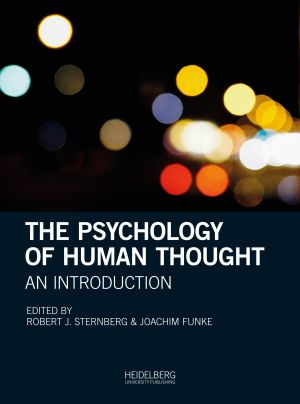Zitationsvorschlag
Davidson, Janet E.: Inductive Reasoning, in Sternberg, Robert J. und Funke, Joachim (Hrsg.): The Psychology of Human Thought: An Introduction, Heidelberg: Heidelberg University Publishing, 2019, S. 133–154. https://doi.org/10.17885/heiup.470.c6671
Lizenz (Kapitel)

Dieses Werk steht unter der Lizenz Creative Commons Namensnennung - Weitergabe unter gleichen Bedingungen 4.0 International.
Identifier (Buch)
ISBN 978-3-947732-33-3 (PDF)
ISBN 978-3-947732-34-0 (Softcover)
ISBN 978-3-947732-35-7 (Hardcover)
Veröffentlicht
31.07.2019
Inductive Reasoning
- In inductive reasoning, conclusions are inferred from evidence but are never guaranteed to be correct. Their degree of certainty is based on a continuum of weak to strong evidence. Strong inductive arguments are based on a substantial number of observations, diversity of evidence, and representativeness of the observations.
- Inductive reasoning is often compared to deductive reasoning. Both of these forms of reasoning are central to critical thinking and involve evidence, logic, and working memory. However, induction and deduction differ in the types of evidence on which they are based and how they are evaluated. In addition, inductive conclusions go beyond the evidence or premises and are educated guesses; deductively valid conclusions follow directly from the premises and are guaranteed to be logically true.
- Inductive reasoning is widely used in everyday life. Humans often automatically make predictions about what will happen next based on what occurred in the past. In addition, this form of reasoning plays an important role in other cognitive activities, such as decisionmaking, categorization, and similarity judgments.
- The availability heuristic is a cognitive short-cut used when people easily retrieve information from memory and perceive it as relevant evidence for the likelihood of a phenomenon. Although this heuristic is sometimes useful, it can undermine the diversity of evidence needed for strong inductive arguments. It can also result in illusionary correlations.
- Confirmation bias also limits the diversity of evidence. This bias occurs when people use enumerative induction and only seek observations that support their hypotheses. Eliminative induction is more informative because it is based on seeking evidence that both confirms and disconfirms a tentative hypothesis.
- The representative heuristic allows us to infer the probability of an event by assuming it is similar to a prototype event. However, this heuristic can result in weak inductive arguments if base rate and sample size are not considered.
- There are several forms of inductive reasoning, including category-based inductions, causal inductions, analogical reasoning, and insight. At some level, they are all based on finding similarities in a situation.
- Category-based induction involves generalizing a property of one category member to a member of another category. Premise typicality, premise-conclusion similarity, premise diversity, and premise monotonicity are taxonomic relations used by novices when reasoning inductively about a relevant domain. In contrast, experts in a domain apply causal, ecological, or thematic relations.
- Causal induction involves predicting what causes outcomes. If a hypothesized cause and effect are both present at the same time and absent at the same time, a causal induction is confirmed. If one is present when the other is not, the induction is disconfirmed. When causal relations are indicated in category-based problems, they over-ride the use of taxonomic relations in making inductive generalizations.
- Analogical reasoning involves comparing two domains in order to infer a quality they have in common. Relational similarity is necessary for this form of reasoning, although surface similarity can foster the mapping of relations between the domains.
- Insight involves perceiving information in a new way, which often requires cognitive restructuring of our mental representations. It is often accompanied by a subjective feeling of “Aha” or not consciously knowing how one arrived at the new perception. Functional fixedness or fixation on unproductive procedures can hinder this form of inductive reasoning.
- Inductive reasoning begins early in life and there is evidence of both continuity and change in its development. Cognitive changes and a larger knowledge base allow older children to perform more complex category-based inferences, causal inductions, and analogical reasoning, while becoming more susceptible to functional fixedness.






